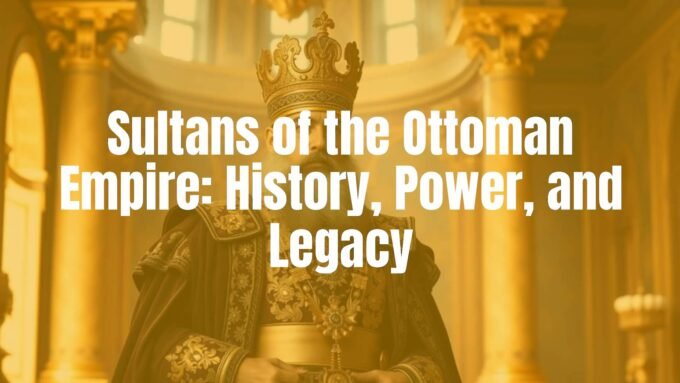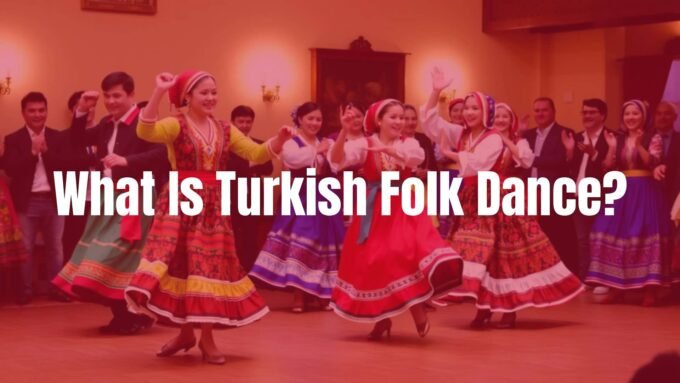Hagia Sophia has stood for more than 1,600 years. Its story shows major changes in religion, culture, and building design. Also called Holy Wisdom or Ayasofya, it has been the main cathedral of the Byzantine Empire, a grand mosque under the Ottoman Empire, a museum, and now again a mosque. Its long life reflects shifts in power, belief, and art, making it a key site in global history.
From the start, Hagia Sophia was a stage where empires showed their strength and faith. Its repeated changes-from Christian basilica to mosque, then museum, and back to mosque-mirror the changing history of Istanbul and the wider region. It is not a still monument. It is living proof of human drive and belief, shaping and reshaping its role as different cultures claimed it.
What Is the Historical Significance of Hagia Sophia?
Hagia Sophia holds a special and important place in world history. Its lasting design and its role at the center of different empires and faiths make it stand out. It has been a symbol of Byzantine Christian rule and Ottoman Islamic rule, and its changes track the larger story of the Eastern Mediterranean. Its ability to adapt and survive wars, quakes, and political change shows how important it is.
Beyond its strong structure, Hagia Sophia has been a stage for art and culture. Inside, you can see Christian mosaics and Islamic calligraphy. These layers, sometimes hidden and sometimes brought back to view, tell a story of mixing and change, turning the building into a storehouse of human history that outlasts any single era or faith.

Why Was Hagia Sophia Built?
Hagia Sophia was first built as the central cathedral of Constantinople, a bold statement of Christian belief and imperial power. The great building you see today is the third on the site. Two earlier churches were destroyed during riots. The new church had to stand up to both nature and civil unrest. Emperor Justinian I wanted a church that would be bigger and more beautiful than any other, to mark his rule and the glory of the Byzantine Empire.
Justinian’s goal was both religious and political. He wanted to strengthen his rule and make the empire’s Christian identity clear. The church was built to be more than a place to pray. It was a sign of divine favor and imperial authority, meant to impress the public and send a strong message to the outside world. It was planned as the center of Orthodox Christianity, the spiritual heart of his lands.
Who Built Hagia Sophia and When?
The Hagia Sophia that stands today was built by the Byzantine emperor Justinian I. Work began in 532 CE after the Nika Revolt destroyed the second church on the site. Justinian chose two leading thinkers to design it: Anthemius of Tralles, a mathematician, and Isidore of Miletus, a geometer and engineer. They knew mechanics and math well and finished the building quickly, between 532 and 537 CE.
The first church there, called the Magna Ecclesia, was ordered by Emperor Constantine I in 325 CE and consecrated by Constantius II in 360 CE. A second version was opened by Emperor Theodosius II in 415 CE. The one we see now is Justinian’s. His plan and his architects’ skill produced a church that stayed the largest cathedral in the world for nearly a thousand years-an outstanding work of early engineering and design.
How Did Hagia Sophia Get Its Name?
The name “Hagia Sophia” comes from the Greek words Hagía Sophía, meaning “Holy Wisdom” or “Divine Wisdom.” In Turkish, it is Ayasofya. The name reflects the church’s dedication to the Logos, the second person of the Holy Trinity, meaning divine wisdom. Its formal name was the Church of God’s Holy Wisdom (Greek: Ναὸς τῆς Ἁγίας τοῦ Θεοῦ Σοφίας).
The name “Hagia Sophia” became common around 430 CE. The first church on the site had been called the “Magna Ecclesia,” or “Great Church,” a name that pointed to its size compared to other churches in the city. The switch to “Holy Wisdom” shows the deep religious meaning the Byzantine Empire gave to the church.
Why Is Hagia Sophia Important in World History?
Hagia Sophia matters because it served as a religious, political, and architectural landmark. For over a thousand years, it was the center of Eastern Orthodox Christianity, hosting coronations, major church events, and moments such as the excommunication of Patriarch Michael I Cerularius, which fed into the East-West Schism. Its size and new building methods set a new model for many churches and mosques that came later.
Its change into a mosque after the Ottoman conquest in 1453 marked a sharp change in both its role and the region’s politics. This step signaled the rise of a new empire and a new faith. The Ottomans kept much of its structure while adding Islamic features. Later, in 1935, Mustafa Kemal Atatürk made it a museum, which fit the new, secular Turkish Republic and opened the building to all as a place to learn about shared human history. Each stage shows its ongoing role as a sign of power, cultural exchange, and the changing story of human society.
Major Phases of Hagia Sophia’s History
Hagia Sophia’s past is a long chain of change, with periods of loss, rebuilding, and reuse under different rulers and faiths. Each period left a clear mark on its form and meaning, building a rich identity as a shared heritage site.
From a timber-roofed basilica to a large mosque, Hagia Sophia has stood through the rise and fall of states, taking in new ideas while keeping its core as a landmark of architecture. Knowing these main phases helps explain why it is unique.
| Phase | Dates | Main role | What happened |
|---|---|---|---|
| First church (Magna Ecclesia) | 360-404 CE | Byzantine cathedral | Burned during riots |
| Second church (Theodosius II) | 415-532 CE | Byzantine cathedral | Destroyed in the Nika Revolt |
| Justinian’s church | 537 CE-1453 | Byzantine cathedral | Earthquake damage and repairs; remained in use |
| Ottoman mosque | 1453-1935 | Imperial mosque | Added minarets and Islamic features |
| Museum | 1935-2020 | Museum | Mosaics uncovered; UNESCO listing (1985) |
| Mosque again | 2020-present | Mosque open to visitors | Conservation work ongoing |
First Church of Constantius II (4th Century)
The first church on the site was consecrated on February 15, 360 CE, under Emperor Constantius II. It was a Christian cathedral called the “Magna Ecclesia,” or “Great Church,” because it was larger than other churches in Constantinople at the time. It was likely a basilica with a wooden roof, a common form then.
Socrates of Constantinople wrote that Emperor Constantius probably played a key role in building it, around 346 CE. The church rose next to the growing Great Palace and near the older Hagia Irene. Its wooden roof was a weakness. On June 20, 404 CE, during riots linked to the exile of Patriarch John Chrysostom, the church burned, leaving only traces behind.
Church of Theodosius II (5th Century)
After the fire, Emperor Theodosius II ordered a new Hagia Sophia, opened on October 10, 415 CE. This second basilica, also called the Magna Ecclesia, aimed to bring back the grandeur lost in 404 CE. Built by the architect Rufinus, it likely had a timber roof and three to five aisles.
Excavations in the 1930s by Alfons Maria Schneider and later teams found parts of this church, including its western entrance, atrium, columns, and carved decorations. The outside had detailed stonework, with some pieces still surviving, and the floor had colorful mosaic patterns. This church also burned, during the Nika Revolt on January 13-14, 532 CE, opening the way for Justinian’s plan.
Church of Justinian I – The Current Structure
The third and present Hagia Sophia was ordered by Emperor Justinian I. Work began on February 23, 532 CE, weeks after the Nika Revolt. Justinian chose Anthemius of Tralles and Isidore of Miletus to build it. Their use of pendentives to carry the huge dome brought a new way to cover large spaces.
The church was finished very fast and opened on December 27, 537 CE, only five years and ten months after work began. This great domed basilica, with a central dome reaching 55.6 meters, became the seat of the Patriarchate of Constantinople and the main site for imperial ceremony. Quakes in 553 and 557 damaged it and the first dome fell. Justinian ordered repairs, finished in 562 CE, with a slightly higher, stronger dome. Much of this 6th-century form still stands.

Change to Mosque after 1453
A major change came in 1453 when Constantinople fell to the Ottoman Empire under Sultan Mehmed II. After the conquest, Mehmed II ordered Hagia Sophia turned into a mosque. This was more than a change of use; it signaled the rise of Islam in the city and Ottoman rule.
Mehmed II led the first Friday prayer inside. Islamic features were added quickly:
- A wooden minaret (later replaced by stone ones)
- A mihrab pointing to Mecca
- A minbar (pulpit)
Christian mosaics were later covered with plaster due to Islamic views on images in sacred spaces. Mehmed II kept the building intact because of its greatness. Hagia Sophia became the chief mosque of Istanbul for centuries, shaped Ottoman design, and set a model for later imperial mosques.
Renovation of 1847-1849 During Ottoman Rule
By the mid-1800s, after almost four centuries as a mosque, Hagia Sophia needed major repairs. Sultan Abdulmejid I hired the Swiss-Italian Fossati brothers, Gaspare and Giuseppe, to restore it between 1847 and 1849. Their work fixed structure and refreshed the look.
- They bound the dome with an iron chain and strengthened vaults.
- They straightened shifted columns.
- They recorded many Byzantine mosaics they uncovered, then covered them again to protect them.
- They added eight huge round medallions with the names of Allah, Muhammad, and the first four caliphs (by Kazasker Mustafa Izzet Efendi).
- They repaired and evened the minarets and added a clock building and a madrasa.
Period as a Museum (1935-2020)
In 1935, as part of the new Turkish Republic’s secular reforms, Mustafa Kemal Atatürk made Hagia Sophia a museum. It had been closed in the early 1930s for repairs. The 1934 decree shifted it to a place open to all, a sign of shared human culture.
During this time, teams worked to uncover and save the Byzantine mosaics that had been covered in the Ottoman era. The Byzantine Institute of America, led by Thomas Whittemore, played a key part from 1931 to 1949. As a museum, Hagia Sophia became Turkey’s most visited site, drawing millions each year and serving as a bridge between East and West. UNESCO named the Historic Areas of Istanbul, including Hagia Sophia, a World Heritage site in 1985, which confirmed its global value.
Return to Mosque (2020-Present)
In July 2020, Turkish President Recep Tayyip Erdoğan announced that Hagia Sophia would again be a mosque. A court ruling canceled the 1934 museum decree, and many religious leaders, UNESCO, and governments abroad voiced strong objections.
Friday prayers resumed on July 24, 2020. Christian images are covered with curtains or by lighting during prayer times. Visitors can enter outside prayer hours. This change renewed debates about shared heritage, national choice, and relations between faiths. In April 2025, a major conservation project began to repair the central dome and improve resistance to earthquakes, to help keep the building safe for the future.
Religious and Cultural Changes of Hagia Sophia
Hagia Sophia’s story is shaped by shifts in religion and culture. From a Christian cathedral to an imperial mosque and then a museum for a time, the building took on the values of each period. These changes were more than paperwork. They reset its purpose and meaning.
Its long life and ability to adapt make it rare among monuments. Its halls and art show a long conversation between different faiths and styles.
Christian Worship and Byzantine Influence
For almost a thousand years, Hagia Sophia was the most important cathedral of the Byzantine Empire and the spiritual center of Eastern Orthodoxy. Justinian I’s plan sent a clear message of Christian belief and imperial power. The interior, with gold mosaics, marble columns, and a vast dome, was built with great care to inspire and support the liturgy.
It was a place of worship and also the site of imperial coronations, key church councils, and daily rites. Its form-especially the use of pendentives to carry a huge dome-became a main model for Orthodox church design across the Byzantine world and beyond. Mosaics of Christ, the Virgin Mary, saints, and emperors served as prayer images and also told the story of Byzantine faith and rule, tying the building to Christian culture.
Islamic Worship and Ottoman Contributions
After 1453, Hagia Sophia began a new life as an imperial mosque. Sultan Mehmed II kept its main structure and brought it into Islamic practice instead of tearing it down. This move showed a link between older imperial power and the new Ottoman rule in Istanbul.
Over time, many Islamic features were added:
- Minarets at the corners
- A mihrab and a minbar inside
- Large roundels with the names of Allah, the Prophet Muhammad, and the first caliphs
- Support work by Mimar Sinan that strengthened the building

Christian mosaics were covered to follow Islamic rules for sacred spaces. These changes, along with strong new supports, made Hagia Sophia fit well within Ottoman building and art and set patterns for later mosques.
Impact of Secularization and Museum Era
The 20th century brought another big change. In 1935, under the secular Republic of Turkey, the building became a museum. This step showed modern Turkey’s push for secular life and presented Hagia Sophia as a shared monument rather than a site owned by one faith. The museum years welcomed visitors from everywhere.
Conservators uncovered and saved long-hidden Christian mosaics, showing the building’s mixed heritage-Byzantine mosaics alongside grand Islamic calligraphy. The museum model aimed to make Hagia Sophia a place to see human history in one building. Some conservatives, however, felt that turning it into a museum took away its Muslim identity.
Key Moments in Hagia Sophia’s Restoration and Protection
Hagia Sophia has survived thanks to strong original building work and steady care over many centuries. From early Byzantine repairs after earthquakes to modern international projects, many patrons, builders, and scholars have worked to protect it.
These efforts have followed the needs of each period-sometimes focusing on structure, sometimes on art, and sometimes on balancing its Christian and Islamic past. Each step has helped it last and keep telling its layered story.
19th-Century Restorations
Between 1847 and 1849, under Sultan Abdulmejid I, the Fossati brothers led a major restoration with about eight hundred workers. Their team worked on both structure and decoration.
- They added key supports: an iron chain around the dome, stronger vaults, and straightened columns.
- They refreshed interior and exterior finishes.
- They exposed and cleaned many Byzantine mosaics in the upper galleries, then covered many again to protect them.
- They introduced large calligraphic medallions and a new maqsura.
- They kept careful records of the building and its hidden mosaics, now stored in Swiss collections.
20th-Century Restorations
After the change to a museum in 1935, the focus shifted to uncovering and restoring Byzantine mosaics that had been hidden for centuries. The Byzantine Institute of America, founded by Thomas Whittemore in 1930, led this work between 1931 and 1949, revealing pieces like the Virgin and Child in the apse, the Imperial Gate mosaic, and the southwestern entrance mosaic.
More conservation followed, including work to steady the structure. By the late 1900s, some neglect led to damage, and the World Monuments Fund (WMF) put Hagia Sophia on its 1996 and 1998 Watch Lists. WMF grants from 1997 to 2002 funded dome repairs, fixed a cracked copper roof, and dealt with rising groundwater that threatened frescoes and mosaics. These projects protected the building and trained young Turkish conservators.
Hagia Sophia During the Occupation of Istanbul (1918-1923)
After World War I, Allied forces (British, French, Italian, and Greek) occupied Istanbul from 1918 to 1922. This period raised fears about the future of key buildings, especially those with strong religious meaning. A popular story says Turkish elder statesman Tevfik Pasha warned the British that Hagia Sophia would be destroyed if they tried to turn it back into a church.
Whether true or not, the story shows how sensitive people were about Hagia Sophia’s religious identity and control during a time of national crisis and foreign presence. It marks the building as more than stone and mortar-a symbol tied to both nation and faith that people felt bound to defend.
Efforts for Safeguarding Cultural Heritage
Protecting Hagia Sophia as shared heritage is ongoing and often hard work. In 1985, UNESCO listed the Historic Areas of Istanbul, including Hagia Sophia, as a World Heritage site. That status carries a duty to protect its value for later generations, whatever its current use.
Dumbarton Oaks took charge of the Hagia Sophia project in 1953 and has logged the building’s art and history in detail. They are working to make their archives and studies free to access online. The 2020 change back to a mosque sparked new talks about the balance between national control and shared heritage. UNESCO voiced “grave concern” and called for talks to prevent harm to its value. Debate continues, showing how active and shared the care of such monuments needs to be.
Hagia Sophia’s Legacy and Influence on Architecture
Hagia Sophia is a major achievement in architecture as well as a site of great historical and religious weight. Its design and daring engineering changed later building styles. Many religious buildings across cultures took ideas from its plan and scale.
Its effect reaches far beyond its walls. It blends engineering and art to show how buildings can carry spiritual and imperial aims, not just serve a basic use.
Works and Structures Inspired by Hagia Sophia
Hagia Sophia’s plan-a huge dome on pendentives with semi-domes helping carry the load-became a model for later builders. In the Byzantine world, the Hagia Sophia in Thessaloniki and the Hagia Irene show its influence. Hagia Irene was even reshaped in Justinian’s time to use a similar domed form. Its size and design raised the standard for churches.
Later, the Ottoman Empire drew deeply from Hagia Sophia. Architects such as Mimar Sinan studied it and adapted its ideas for imperial mosques like the Şehzade, Süleymaniye, and Rüstem Pasha mosques. These often used a large central dome with semi-domes, forming a clear Ottoman style. Beyond these, neo-Byzantine churches like the Kronstadt Naval Cathedral and some synagogues also adopted parts of its design, showing how long and how widely its influence spread.
Its Impact on Architectural and Artistic Trends
Hagia Sophia shaped later architecture and art in strong ways. Justinian’s basilica was a peak of late antique design and the first great work of Byzantine architecture. The pendentive-a rounded triangle that links a round dome to a square base-solved a hard problem and opened the way to vast, open interiors. The ring of windows at the dome’s base makes the dome seem to float and fills the space with light.
Inside, colorful marbles and gold mosaics set a rich style for Byzantine art. After the change to a mosque, the mix of covered (and later partly revealed) Christian mosaics with large Islamic calligraphy created a special blend. Hagia Sophia showed that architecture can carry deep religious ideas and serve state power, shaping both structure and decoration in churches and mosques across Eastern and Western Christianity and Islam.
Frequently Asked Questions about Hagia Sophia’s History
Hagia Sophia’s long and layered past brings many questions. Its changes between faiths and roles invite curiosity about what happened and why. Answering common questions helps explain key parts of its story.
People ask about the faiths that used it, the changes made by different rulers, and the legends tied to it. These questions show why Hagia Sophia still draws interest and care.
Which Religions Have Used Hagia Sophia for Worship?
Two major religions have used Hagia Sophia as a place of worship: Christianity and Islam. Built in the 6th century as a Christian cathedral, it served the Byzantine Empire as the main church of Eastern Orthodoxy for nearly a thousand years. During the Fourth Crusade in 1204, it briefly became a Roman Catholic cathedral under the Latin Empire, then returned to the Eastern Orthodox Church in 1261.
After the Ottoman conquest in 1453, Sultan Mehmed II turned it into an imperial mosque. It stayed a mosque for almost five centuries and was central to Islamic worship in Istanbul. In 1935 it became a museum open to all, until it changed back to a mosque in 2020. Over time, it has been an Orthodox cathedral, a Catholic cathedral, and an Islamic mosque.
What Changes Occurred During the Ottoman Period?
The Ottomans reshaped Hagia Sophia for Islamic worship and long-term use. Right after 1453, Mehmed II added a minaret, a mihrab, and a minbar. Later sultans and builders expanded and strengthened the complex. Key changes included:
- Heavy buttresses by Mimar Sinan to help against earthquakes
- Four tall minarets that changed the skyline
- Plaster covering the Christian mosaics inside
- Large calligraphic medallions with holy names
- New buildings such as libraries, madrasas, and ablution fountains (şadırvan)
These steps adapted the church for Islamic prayer while keeping much of its Byzantine form.
What Myths or Legends Exist about Hagia Sophia?
Many stories surround Hagia Sophia. One famous tale says that when Justinian I saw the finished church, he cried, “Solomon, I have surpassed thee!” claiming it was greater than the Temple of Solomon. Historian Sedat Bornovalı suggests this story likely appeared centuries later, but it shows the huge aim behind the project.
Another tale tells of a late 6th-century earthquake that cracked the dome. Advisors told Justinian, the story goes, that a new prophet had been born in Arabia and that special mortar was needed to fix the dome, mixed with the young prophet’s saliva, Zamzam water, and soil from Mecca. This “holy mortar” supposedly healed the cracks. Urban researcher Hasan Mert Kaya says such stories help people feel a close bond with Hagia Sophia-“their mosque, their temple”-across different communities.














Leave a comment